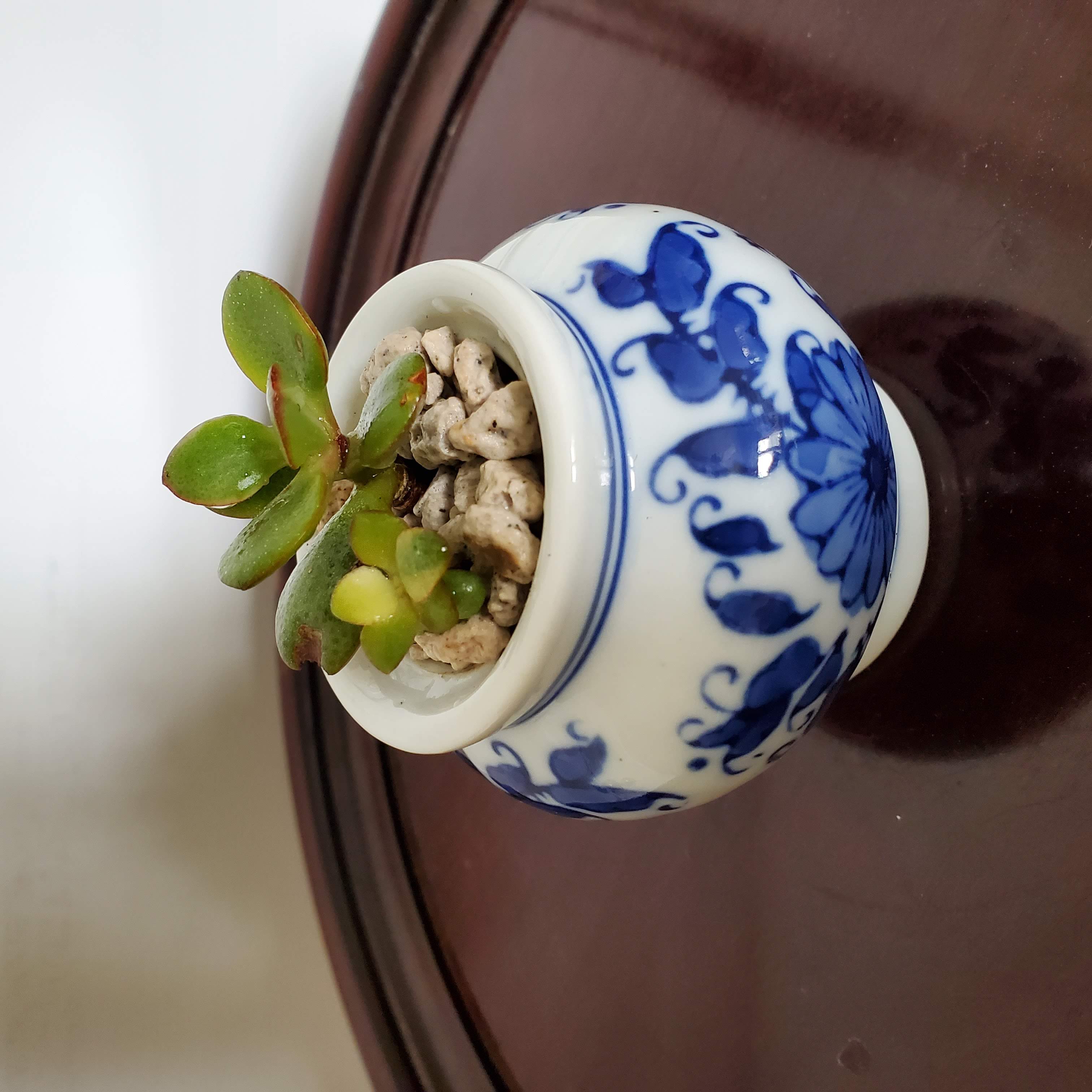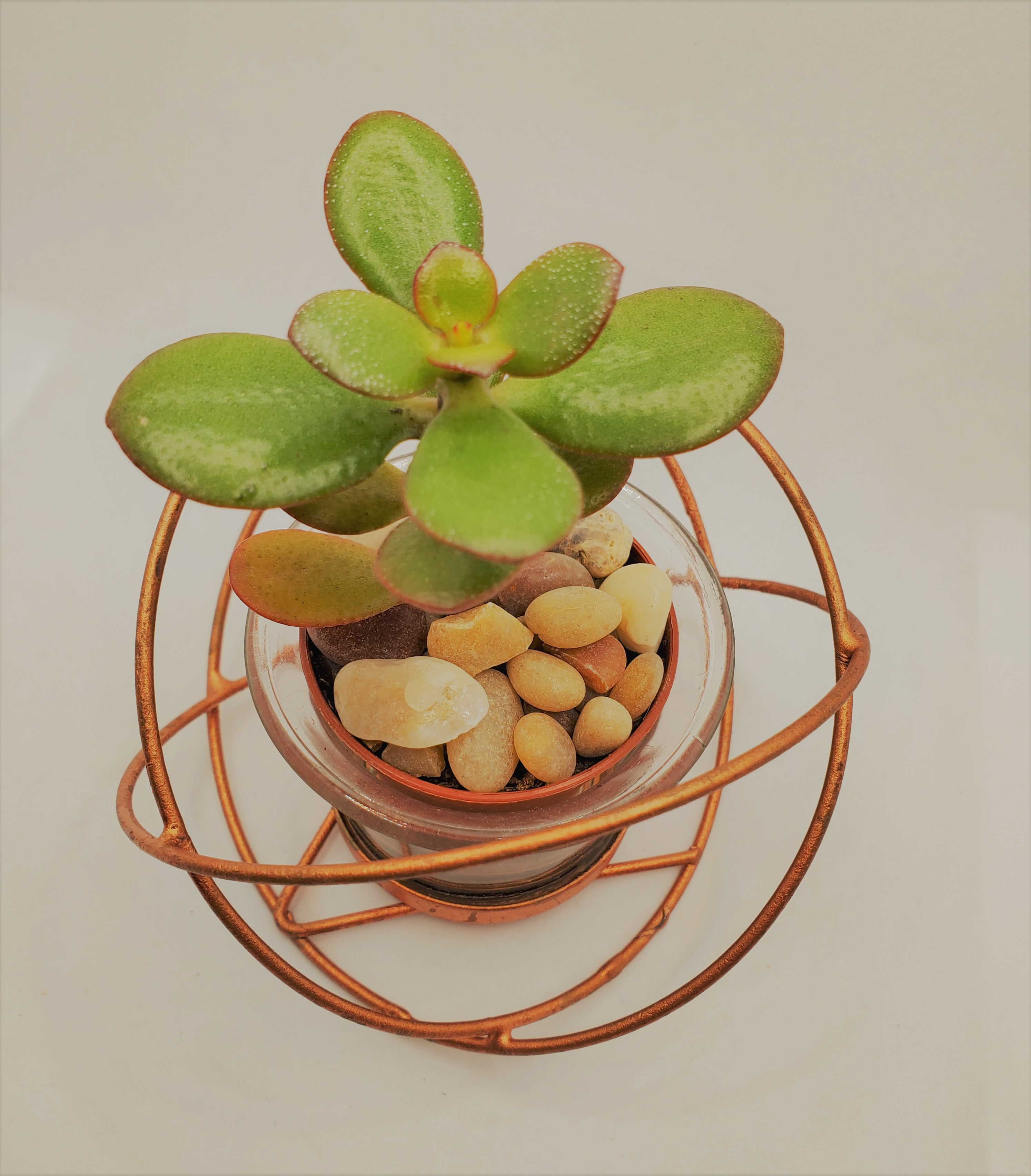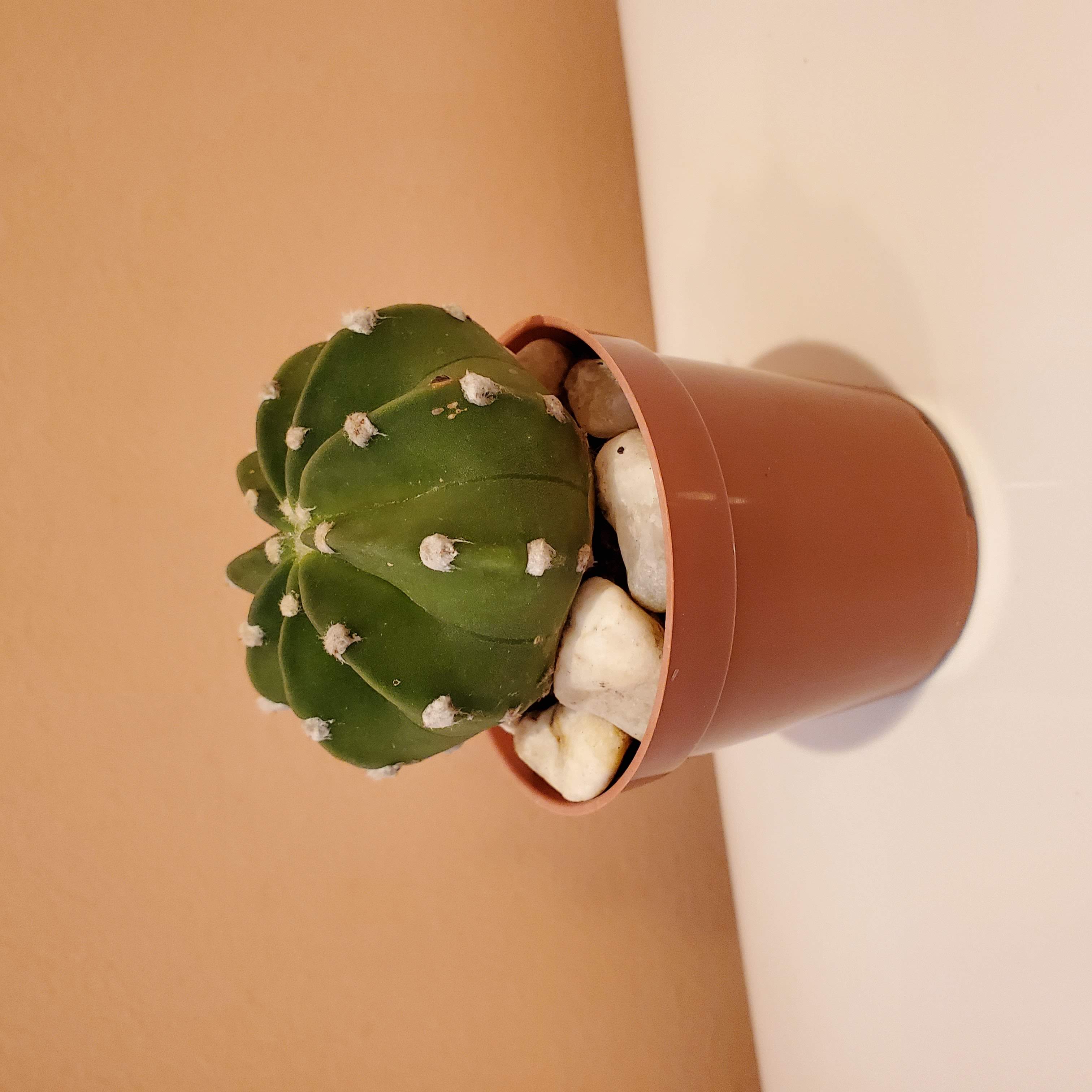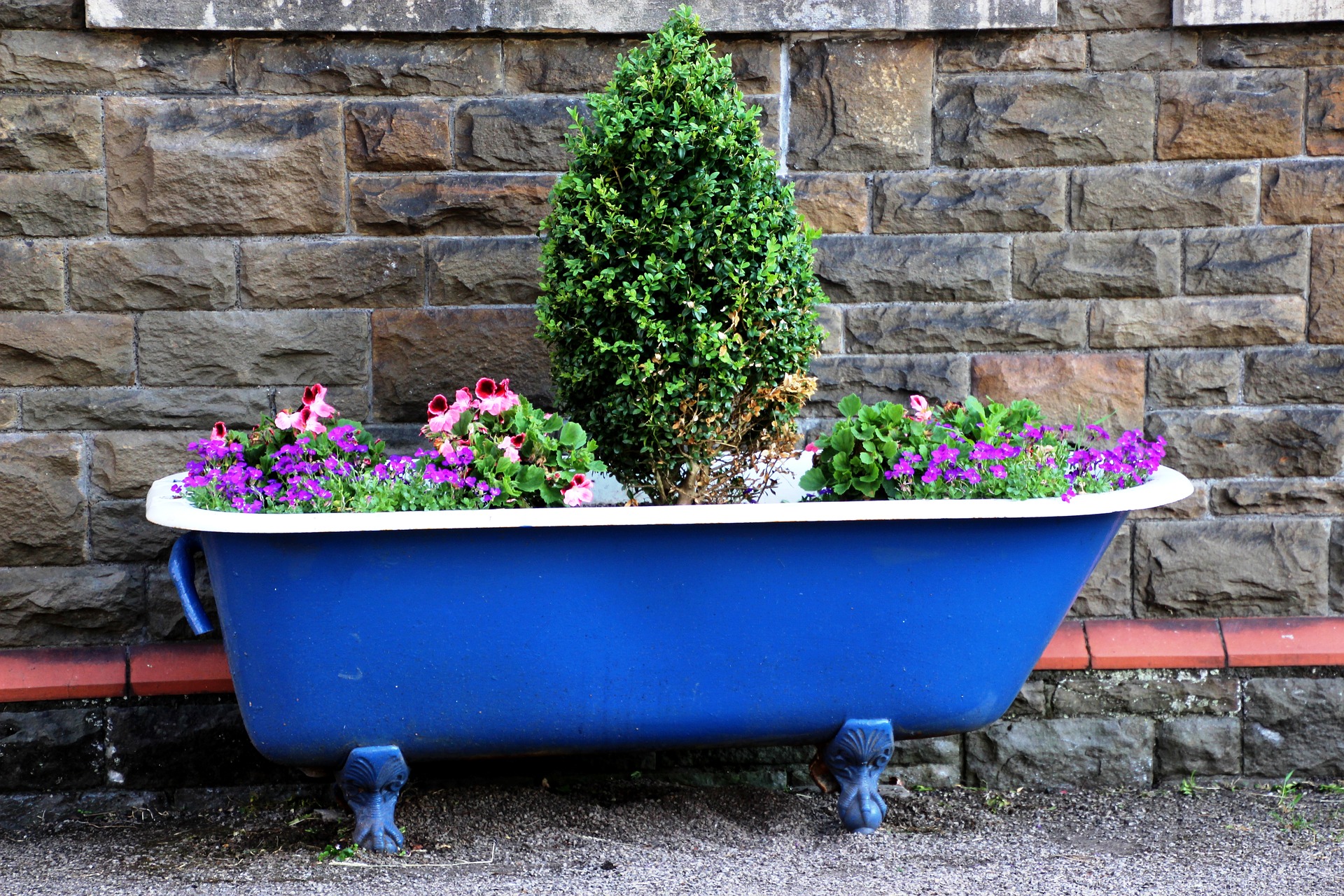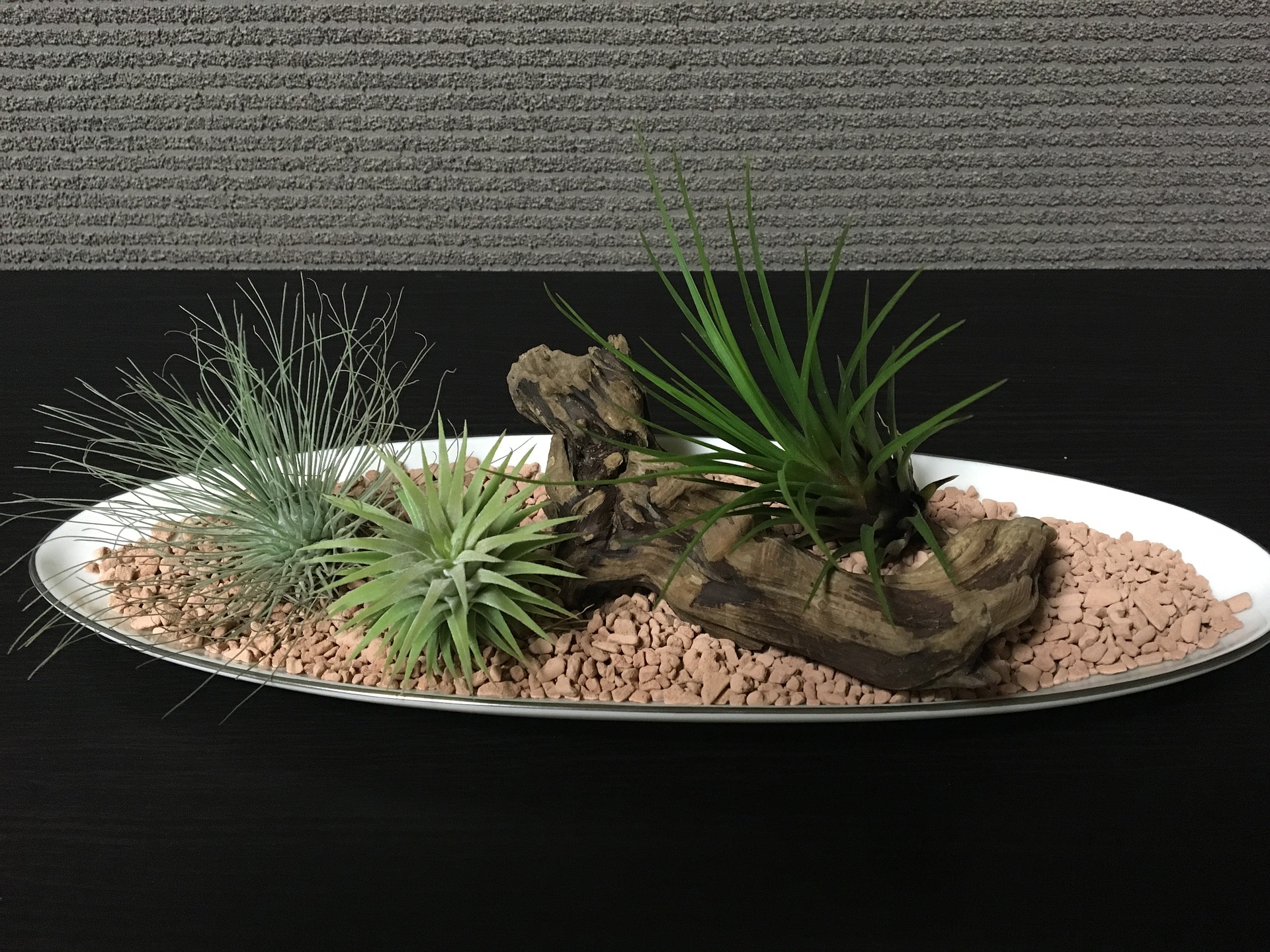- Home
- Succulents
- Jade Plant
Jade Plant - Crassula ovata
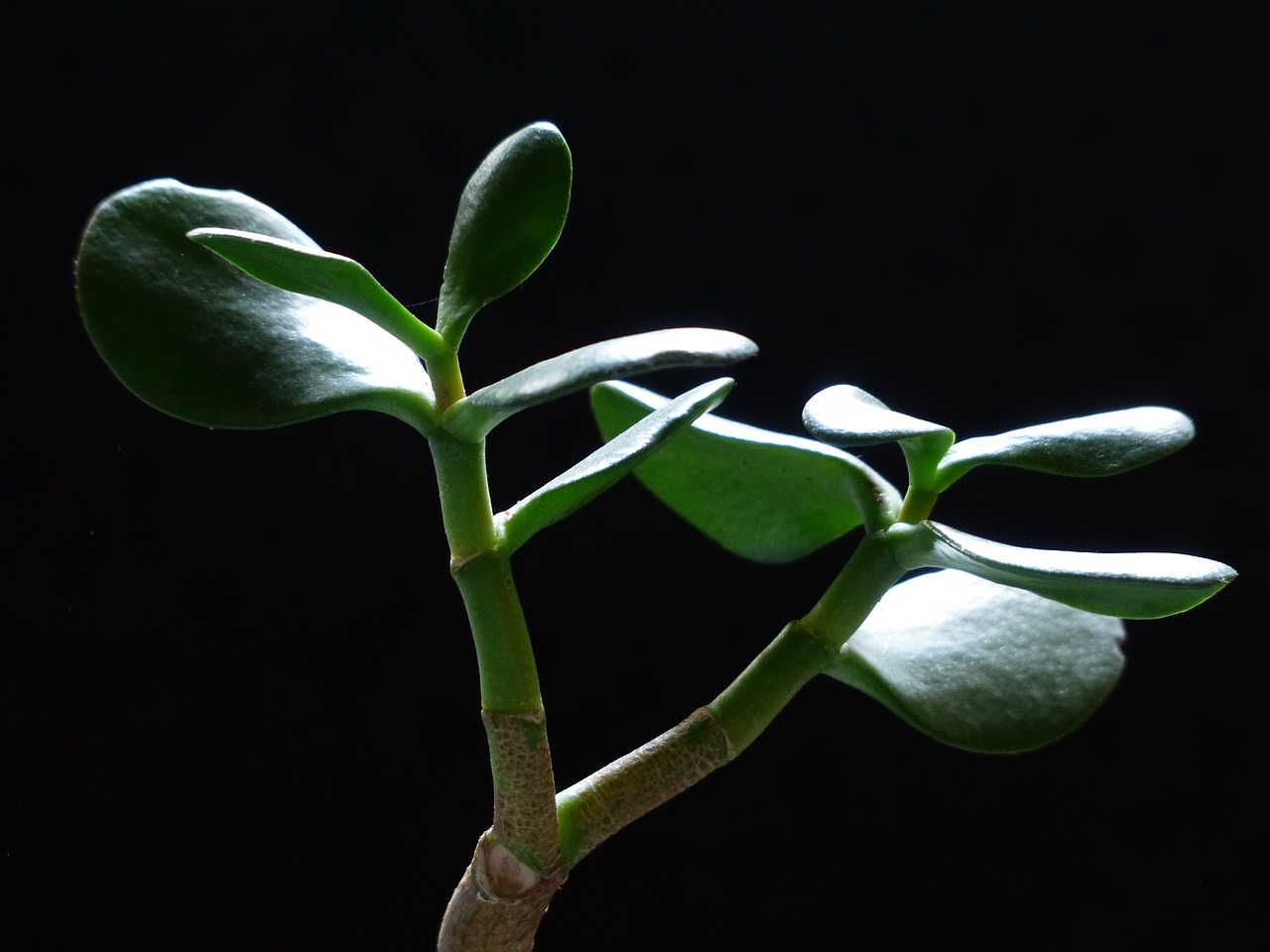
Jade Plant is a common type of succulent, often used as a houseplant. Its scientific name is Crassula Ovata or Crassula Argentea, and it is also frequently called Lucky Plant or Money Plant.
Jade has fleshy oval-shaped leaves in a rich jade green (hence its name), and older plants start to look like small trees or bushes with their woody stems.
Many people believe a healthy Jade Plant will bring luck and prosperity.
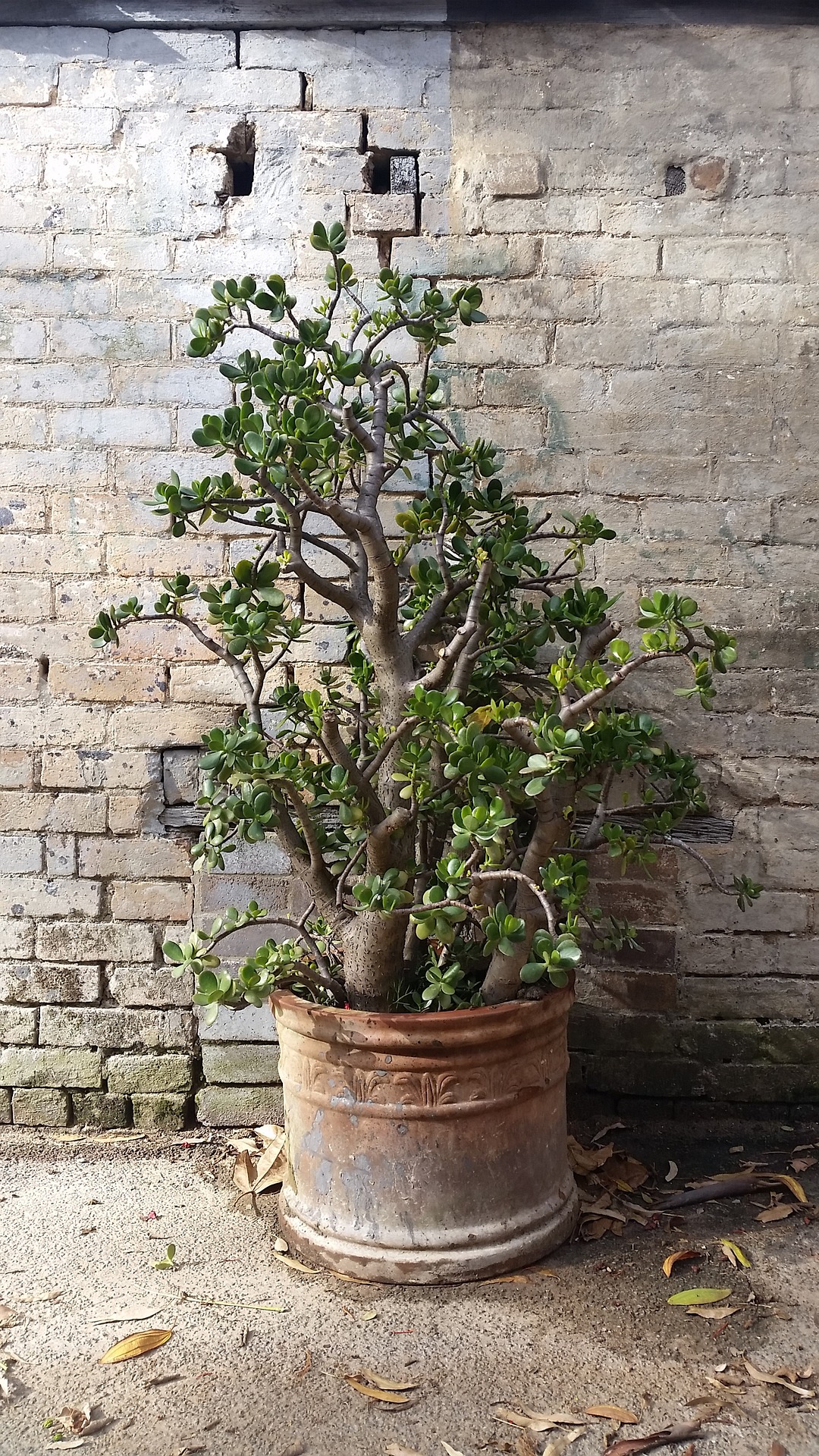
Jade is quite tolerant of neglect, needing very little water, and it will put up with lower light conditions inside. However, Jade will show better colors and growth in a sunny spot with at least four hours of sun per day.
Jade plants are native to South Africa and Mozambique, but are commonly grown as houseplants worldwide. In a sunny location, your Jade plant might produce small pink or white flowers, but they are not grown for their blooms.
Jade grows slowly, but old plants like the one here can get quite large and more tree-like.
|
Scientific name |
Crassula ovata |
|
Other names |
Crassula argentea, Lucky Plant, Money Plant |
|
Sun needs |
Full sun, partial sun |
|
Water needs |
Water when soil is fully dry |
|
Hardiness zone |
10 |
|
Blooms |
Small white/pink flowers |
Jade plant benefits
These are just some of the benefits of growing a Jade plant:
- Easy to care for,
- Long-lived,
- Doesn't grow too large too quickly,
- Considered by some to bring luck and prosperity.
New in the store
Tiny blue and white Planter with Baby Jade Succulent in an upcycled Ginger Jar.
Types of Jade plant
In addition to the plain, green Jade, there are a number of other types of Jade plant:
Variegated Jade
Some varieties of Jade plant are variegated, meaning the leaves are not just green but also have white, cream or yellow. It is best to grow variegated Jade plants in full sun to maintain and enhance their colors.
- 'Hummel's Sunset' has leaves that are tipped in yellow and red.
- 'Tricolor' has variegated leaves in green, cream and white.
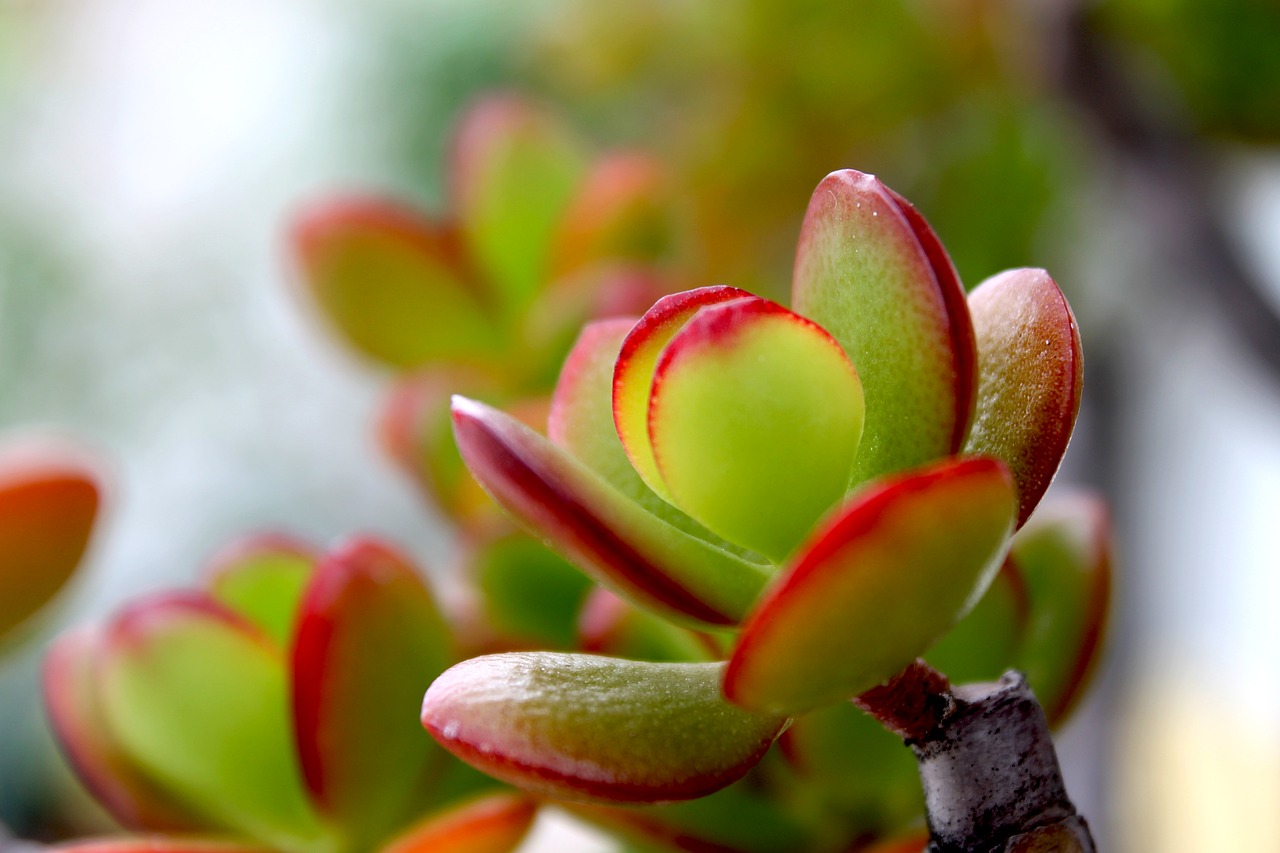
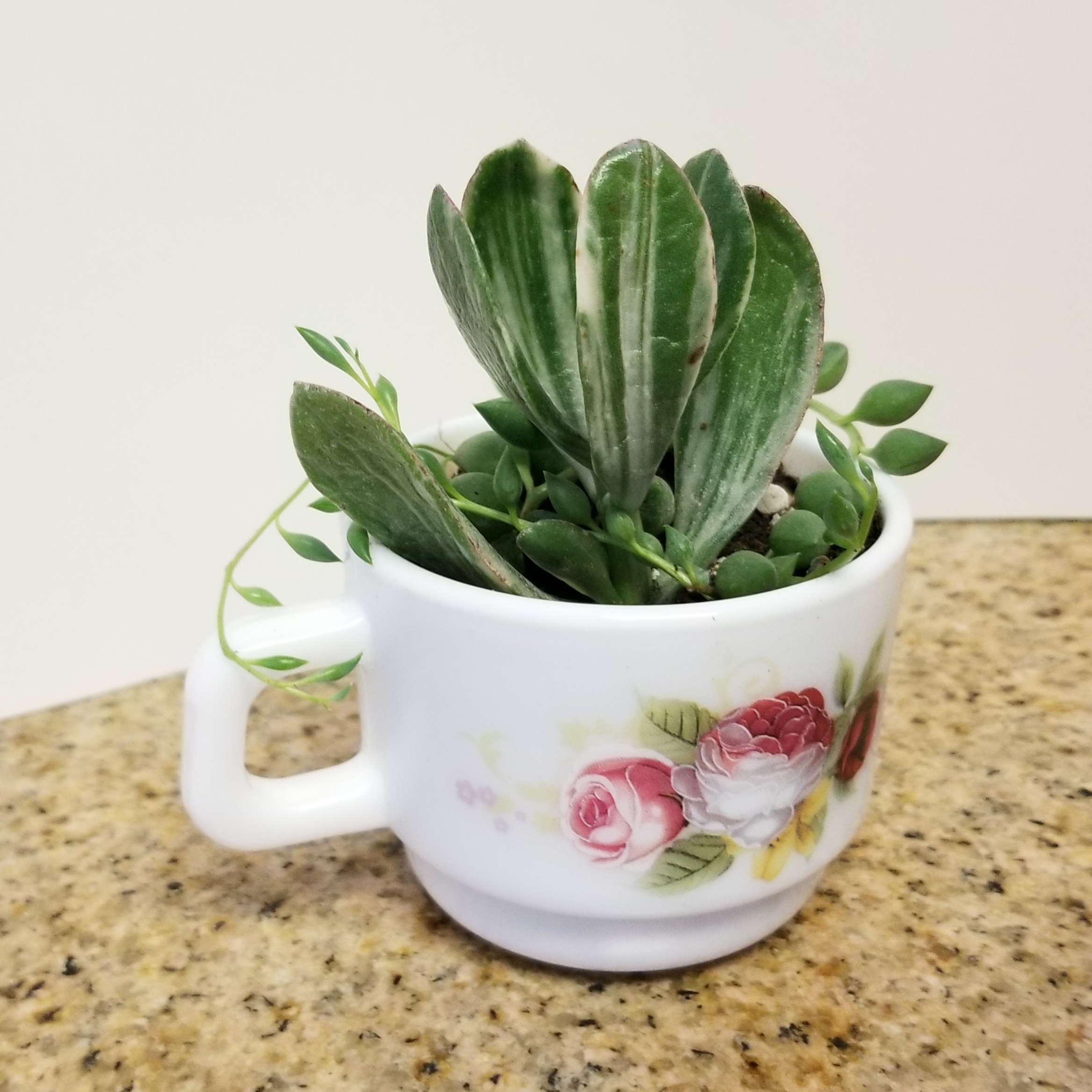
Ripple Jade
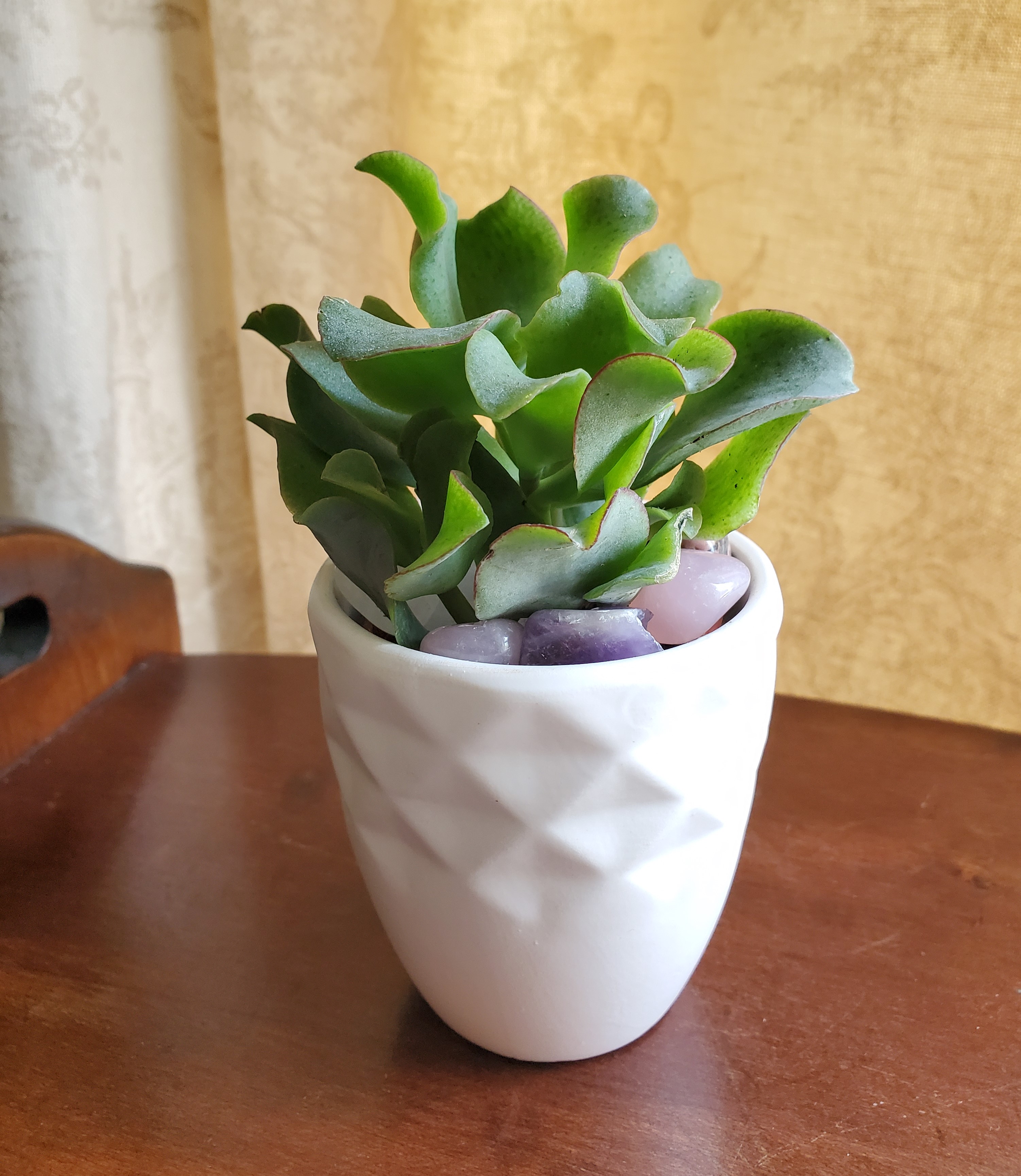
Ripple Jade, sometimes called Curly Jade, has thinner, wavy, twisted leaves.
Miniature Jade
Miniature Jade or Baby Jade is a dwarf version of the regular Jade Plant. The leaves are smaller, and the overall plant has a shorter growth habit, and can grow into a small, tree-like bonsai quite easily.
We have Baby Jade available in the store in this pretty rose gold metal & glass planter.
Gollum Jade
Gollum Jade is also sometimes called 'ET's Fingers'. It has odd-looking tubular leaves that are tipped in red.
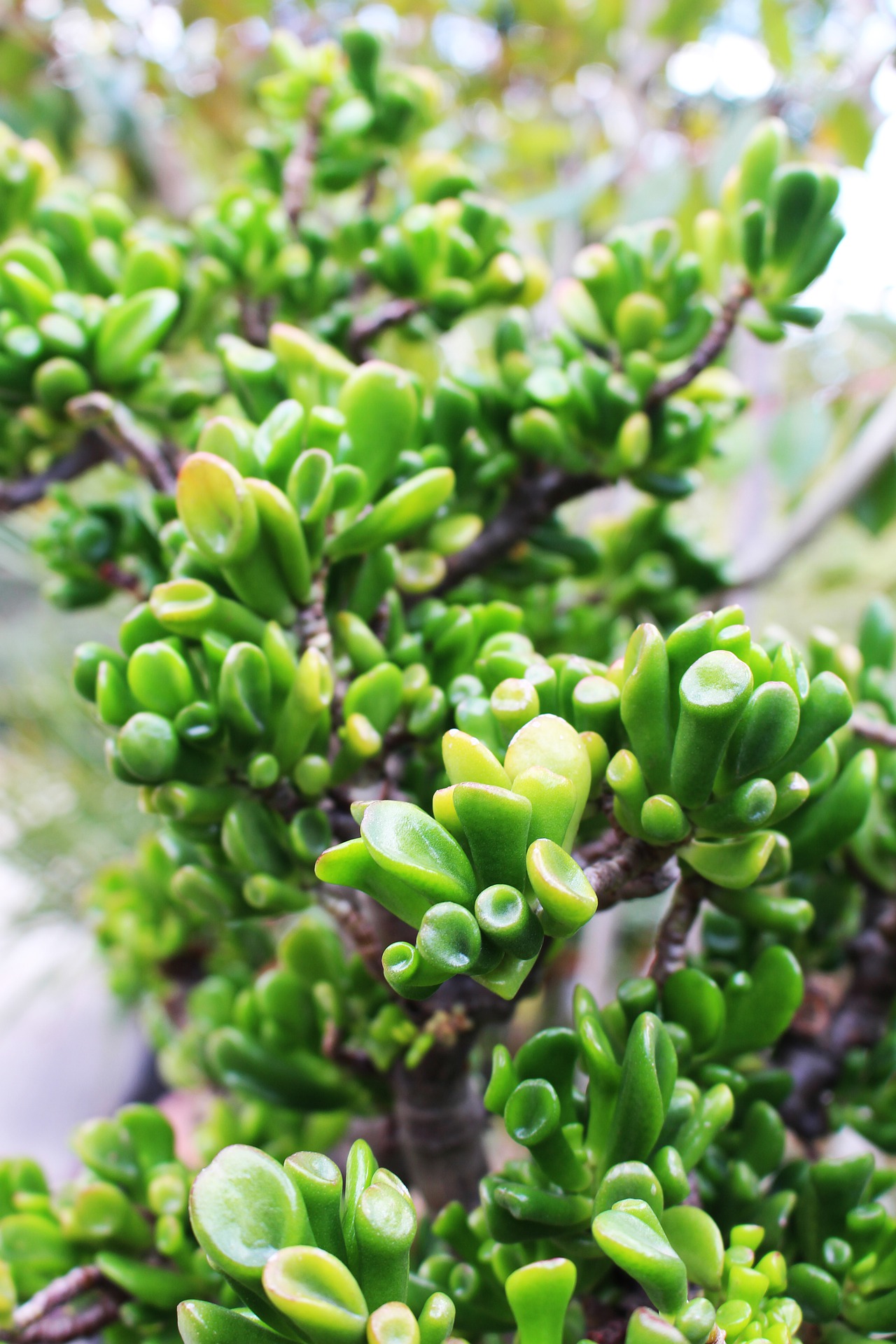
Hobbit Jade
Hobbit Jade is similar to Gollum Jade, but the leaf tips are wider and more trumpet-shaped.
Jade plant care
Do jade plants need a lot of sunlight?
They do prefer to have some sun, but jade plants are one succulent that can put up with fairly low light conditions. However, you will find your plant is happier and more colorful if it gets at least a few hours of direct sun (or a grow light) every day. Jade is more likely to bloom with good sunlight, also.
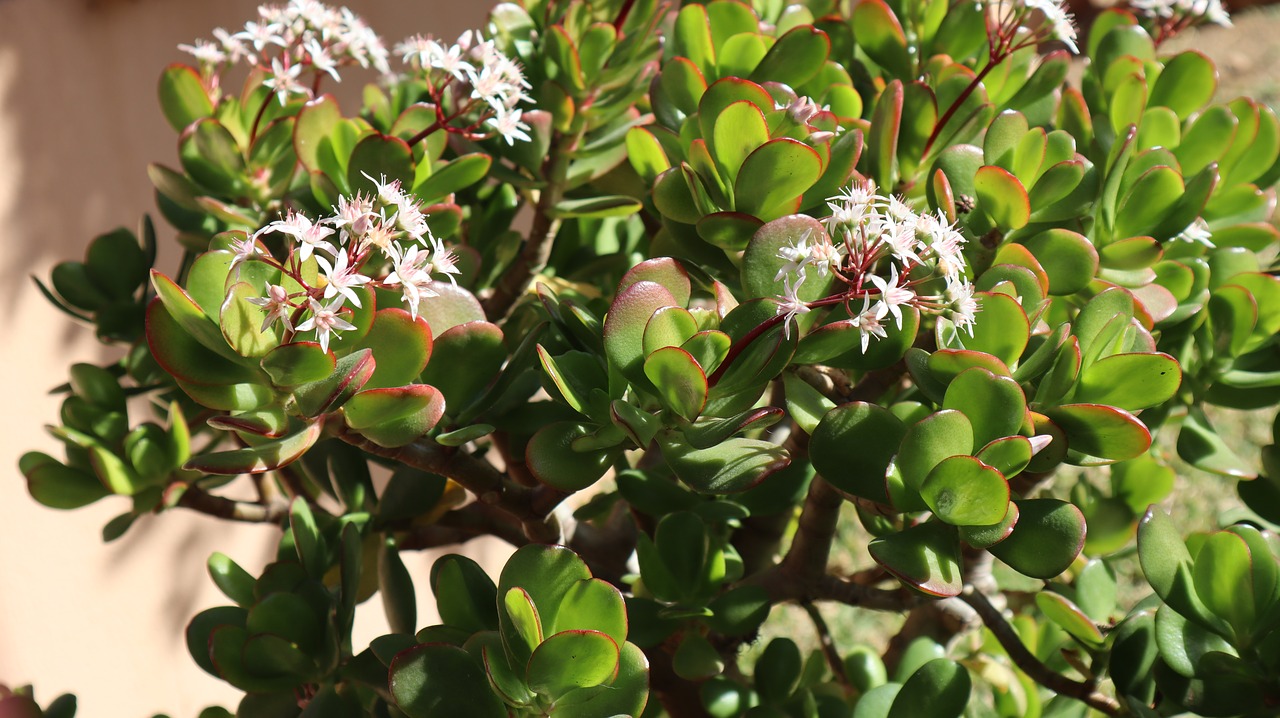
How much water do jade plants need?
Like most succulents, you should let the soil dry out completely before watering your plant. The best way to tell if your plant needs watering is to look at the leaves: usually, the jade plant's leaves will start to wrinkle a little bit when they are thirsty. When you water, give them a thorough drink (until water comes out of the drainage hole in the bottom of the pot), let them sit in a saucer of water for five or ten minutes to soak, and then remove them from any standing water. Like other succulent plants, if you let your jade sit in water for too long they are prone to root rot.
Jade plants are spring and summer growers, so your plant will probably appreciate a little more water in those months, and in the winter when the plant is quite dormant you should keep the soil on the dry side.
Jade plant care indoors
Jade plants make great houseplants, and they are very easy to take care of indoors. They will do fine in bright indirect light, or a sunny windowsill, and with a good watering every now and then (but let them dry thoroughly in between). The glossy leaves can pick up dust, so give them a wiping down every now and then.
Jade plant care outside
You can also grow your jade plant outside if you live in a warmer climate. Even if you get cold winters, your jade will be very happy to spend the summer out on the garden patio or deck. Just make sure to bring your plant inside once the nighttime temperatures drop below 50F or so.
Jade plant soil
The best soil for your jade plant is a well-draining cactus or succulent potting mix. It is important the soil drains quickly (doesn't stay wet for too long) so that your plant's roots don't rot. You can also mix regular garden soil with some sand, small rocks, or pumice.
As your Jade plant grows it might become top-heavy, since it doesn't have deep roots. So for a more mature plant select a heavier sandy soil rather than light pumice to give something for the shallow roots to anchor to, and to weigh down the pot to avoid tipping over.
Jade plant pruning
Jade plants are often used as Bonsais, with careful pruning that makes them look like little trees.
You can also prune your Jade plant to encourage fuller growth and stop it from getting to tall or leggy. Any cuttings can be stuck back in the soil, where they will root and grow a new plant.
Jade plant propagation
One of the benefits of succulents is that they are very easy to propagate from a leaf or cutting. The jade plant is no exception to this rule: Just carefully twist off a leaf or cut a branch, let the cut dry over for a couple of days, then place in damp soil. It might take some time, but eventually your cutting will start to grow roots and/or a small "baby" plant.
Problems
Jade plants are prone to a few problems, which are easy to address if you know what to look for:
Leggy jade plant
If you notice your plant starting to get leggy, with very long stems that look like they are stretching toward the light, then probably your plant is not getting enough sun. You can either move it to a sunnier spot, or use a grow light. You can also prune a leggy jade plant to encourage more compact growth, but if you don't also give it more light then it will eventually start stretching again.
Diseases
Jade plants can sometimes get diseases or insect damage. These include mealy bugs, scale, fungus and mildew, spider mites or aphids.
An infestation of mealy bugs is probably the most common disease problem you might find on your jade plant. If your plant seems to have a few areas of fluffy cotton along the stem or at the base of a leaf, that is probably a mealy bug. Just dip a q-tip in rubbing alcohol and carefully wipe off the fluff and the bugs that like to hide underneath. You should also quarantine your jade plant by placing it in another room so the bugs don't infest your other succulents.
Root rot
All succulents, including jade plant, can be susceptible to root rot if they are overwatered. Never let your plant's soil stay wet for longer than a day or two. If it stays wet longer after a watering, then you are probably giving it too much water or the soil is too rich. Use well-draining soil made for succulents and cacti, and only water when the soil is thoroughly dried out all the way through. You can use a wooden chopstick or a water meter to check that it is completely dry.
Next, learn about other succulents: Zebra Plant.
- Home
- Succulents
- Jade Plant
